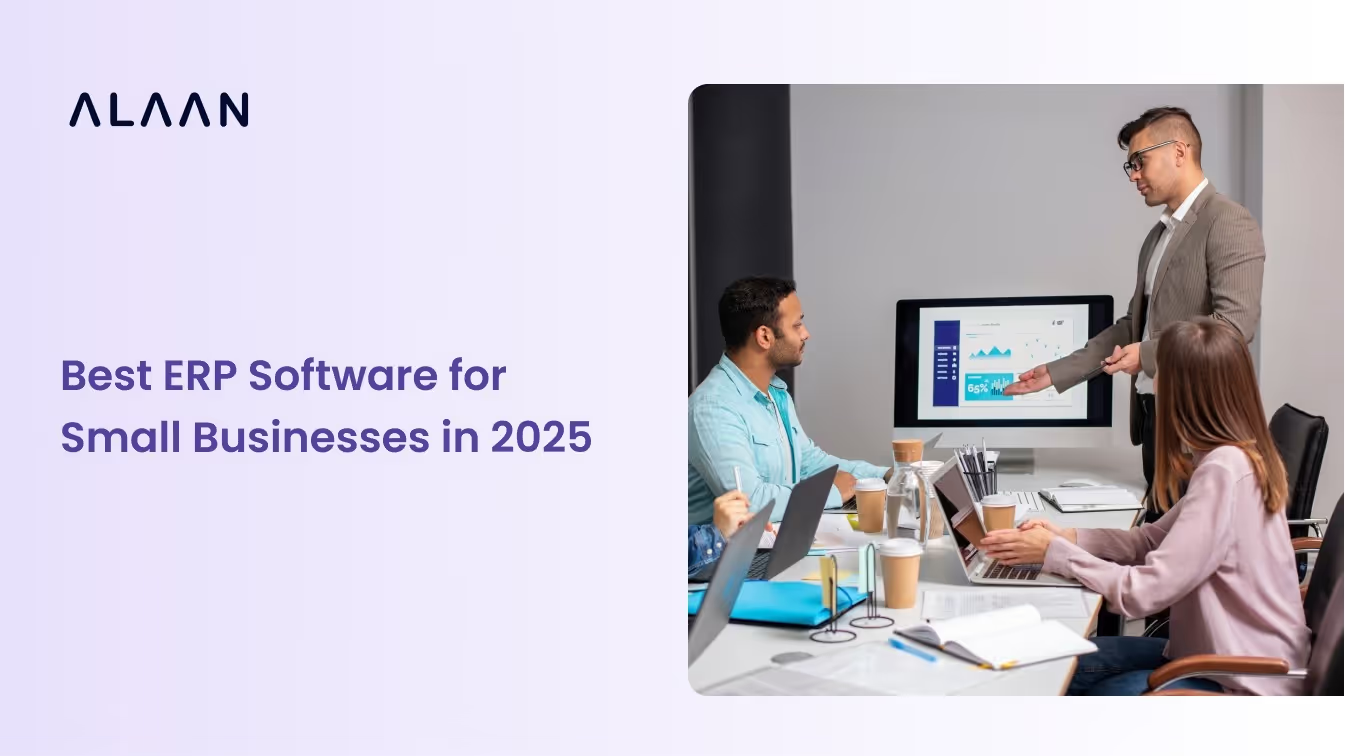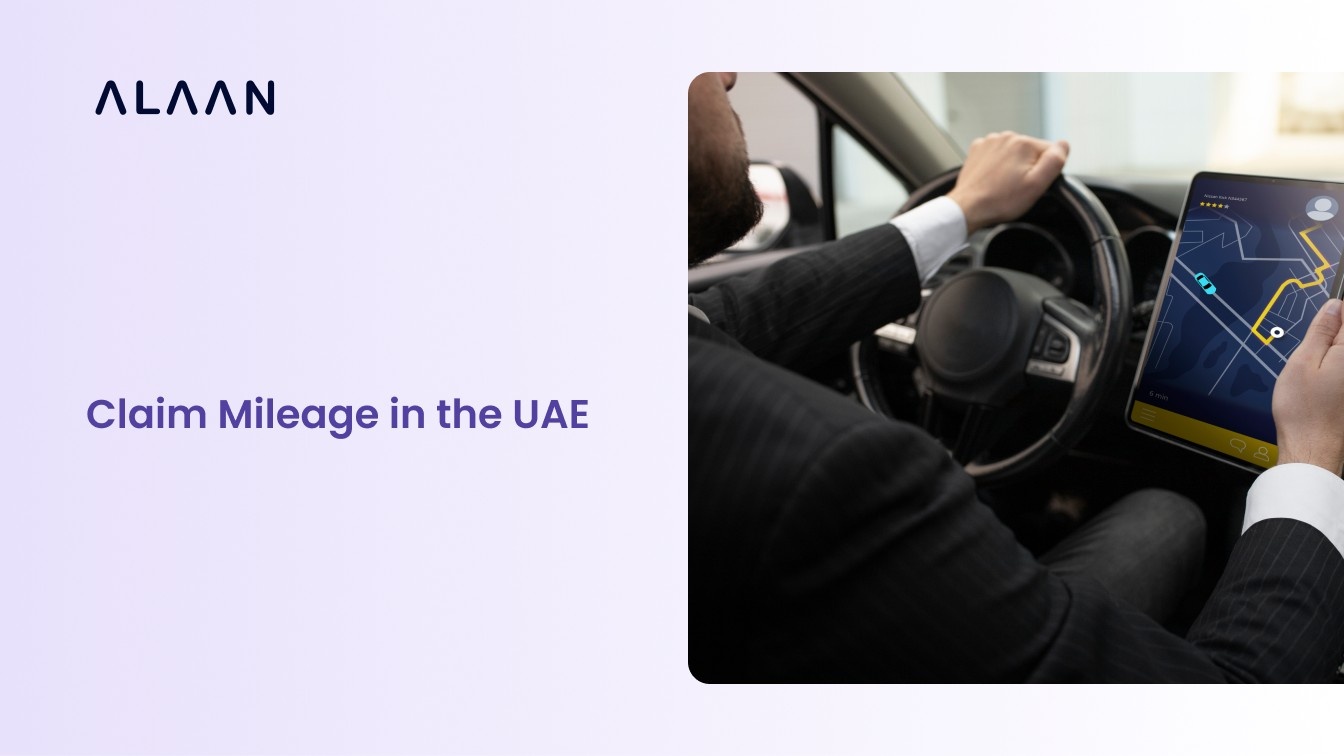ERP software is no longer just for large enterprises. According to research, 82% of small and midsize businesses with under $50 million( AED 183.5 million) in annual revenue now use ERP tools.
For growing teams, ERP offers structure by replacing disconnected systems with one platform, improving visibility, and reducing the manual work that slows down day-to-day operations.
In the UAE, regulatory requirements like VAT compliance, e-invoicing, and corporate tax alignment further increase the stakes. MENA-based SMBs don’t just need an ERP—they need one that’s lean, scalable, and tailored to local compliance from the start.
This blog breaks down the best ERP systems for SMBs in the region and offers a checklist to ensure your next implementation delivers long-term value.
Key Takeaways:
- Leading ERP tools help small businesses unify finance, inventory, and operations into one streamlined system.
- Platforms like NetSuite, SAP, Microsoft Dynamics, and Zoho offer varying strengths across automation, flexibility, and compliance.
- Key priorities include VAT support, cloud access, cost transparency, and easy integration with existing tools.
- Many ERPs lack built-in spend control, leading to manual errors and delayed reporting.
What Is ERP Software?
ERP (Enterprise Resource Planning) software brings together core business functions, finance, inventory, procurement, and HR into one system. It replaces disconnected tools and spreadsheets with a single source of truth.
For small businesses, this means fewer manual errors, faster month-end closes, and more accurate forecasting. Teams can track cash flow, manage suppliers, and monitor stock in real time, without switching between platforms.
Modern ERP tools also offer cloud access, lower upfront costs, and built-in compliance features, making them far more accessible than traditional enterprise systems.
Still, not every ERP is built with small business needs in mind. Here's what to look for before choosing one.
[cta-9]
Why Do Small Businesses Need ERP Software?
Most small businesses start with separate tools for accounting, inventory, sales, and payroll. It works early on, but as operations grow, disconnected systems create inefficiencies, errors, and blind spots.
ERP software solves this by creating a connected, centralised system where data flows automatically between functions.
With the right ERP, small businesses can:
- Centralise data across departments: Sales, inventory, procurement, and financials stay in sync. No more duplicate entries or conflicting records.
- Automate operational tasks: Billing, order tracking, and reporting run with minimal manual input, reducing delays and human error.
- Scale with structure: Add new users, products, or locations without disrupting how your business runs.
- Access real-time insights: Track performance and cash flow in the moment, not after the fact, with dashboards that surface what matters.
- Serve customers more efficiently: Faster order processing and cleaner data translate into better response times and more reliable delivery.
For growing businesses, ERP brings the structure needed to operate efficiently and make decisions with confidence.
What to Look for in ERP Software for Small Businesses
Not every ERP system fits the way small businesses work. These are the key factors to consider before choosing one:
- Ease of use: The interface should be simple and intuitive. If it's hard to navigate, your team won't adopt it.
- Scalability: Choose a system that can grow with your business. It should support more users, modules, or locations without needing a complete overhaul.
- Cloud access: Cloud-based ERPs are easier to set up and maintain. They allow your team to work remotely and reduce dependency on internal IT support.
- Local compliance: For businesses in the Middle East, built-in support for VAT, Arabic invoicing, and regional tax rules is essential.
- Transparent pricing: Understand exactly how pricing works, whether it’s per user, per module, or based on usage. Watch for hidden costs around setup, training, or customer support.
- Integration support: The ERP should connect easily with your existing tools, including CRM, payroll, and expense management platforms.
Now that you know what to look for, let’s explore some of the top ERP software options for small businesses in 2025.
Top ERP Software for Small Businesses in 2025
ERP systems have evolved well beyond on-premise legacy tools. Today's solutions are cloud-based, modular, and built to serve small and mid-sized businesses with limited IT resources.
Here are some of the top ERP software platforms small businesses are adopting in 2025, based on usability, scalability, and regional relevance.
1. SAP Business One
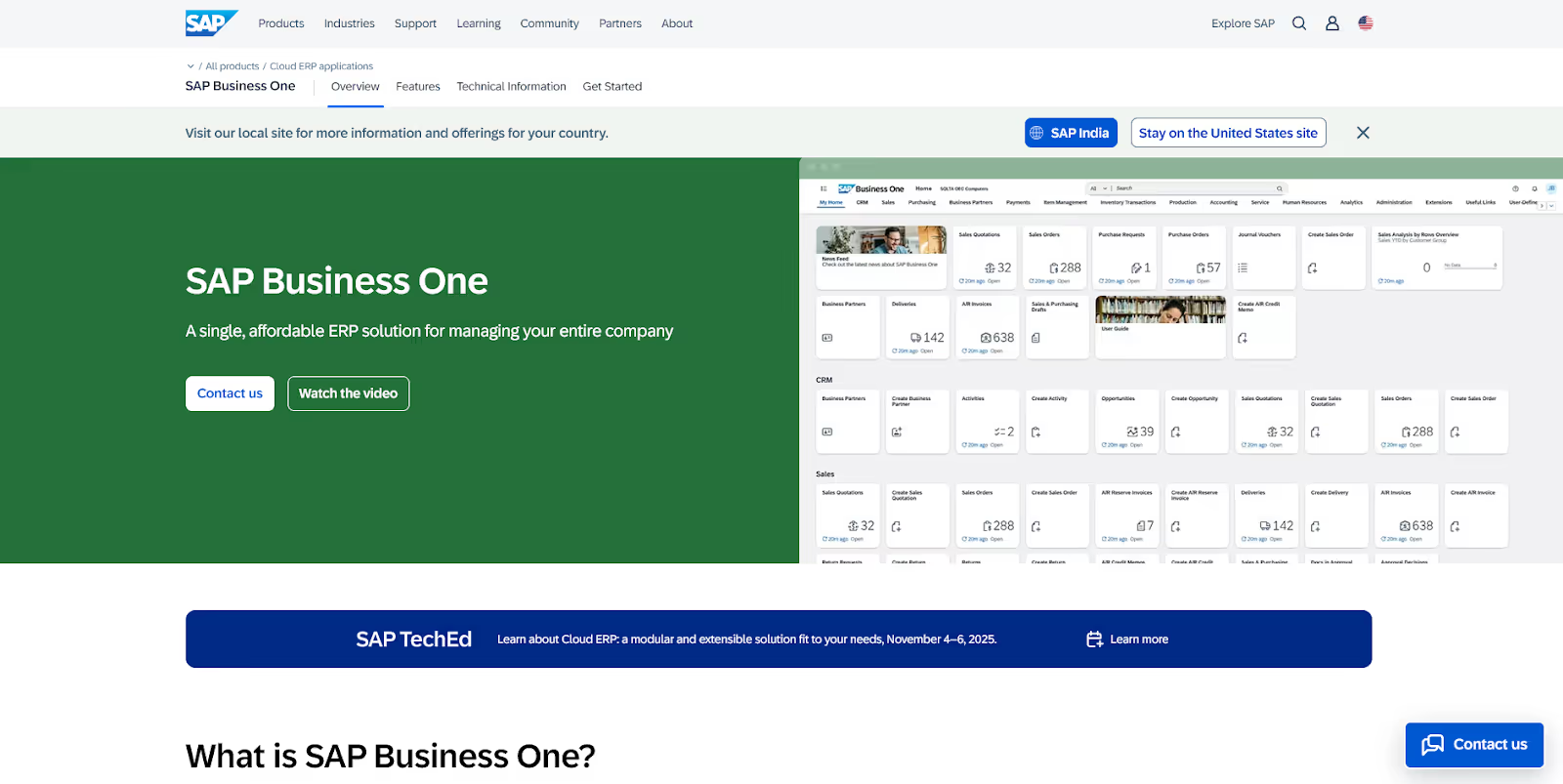
SAP Business One brings together the essentials of finance, sales, inventory, and project management into one unified system. It’s built for small and mid-sized businesses that need automation, visibility, and control across daily operations.
Key features
- Streamlines financial management with built-in automation
- Tracks the full sales cycle from lead to payment
- Supports smarter purchasing through a complete procure-to-pay workflow
- Offers real-time insights across teams for faster decisions
- Generates accurate, consolidated reports from a central data source
Pros
- Intuitive dashboard with helpful visual workflows
- Strong support for managing customer and vendor relationships
- SAP B1 has regional resellers and Arabic UI support—a key plus for local SMEs.
- Trusted brand with long-term reliability
Cons
- Implementation requires time and technical support
- Limited flexibility without additional paid add-ons
- May not suit businesses looking for lightweight or fast deployment
SAP Business One is used by over 70,000 small businesses globally.
2. Oracle NetSuite

World's #1 Cloud ERP for any business size & industry | NetSuite India
Oracle NetSuite is a robust cloud-based ERP built for fast-growing and mid-sized enterprises. While widely used across industries in the UAE and beyond, it particularly shines in product-based and operationally complex businesses that need end-to-end control.
Key features
- Role-based dashboards and KPIs tailored to different business functions
- Full-suite coverage: accounting, inventory, production, order management, and supply chain
- Multi-entity support for managing subsidiaries, business units, and currencies
- Real-time access to financial and operational data
- Modular deployment allows teams to scale gradually
Pros
- Deep functionality for operationally complex businesses
- Scalable across locations and subsidiaries
- Real-time visibility across the organisation
Cons
- Requires expert configuration to unlock full potential
- May be too heavy for early-stage startups or service-based businesses
NetSuite customers report an average of 30–50% faster financial close times after implementation.
3. Microsoft Dynamics 365 Business Central
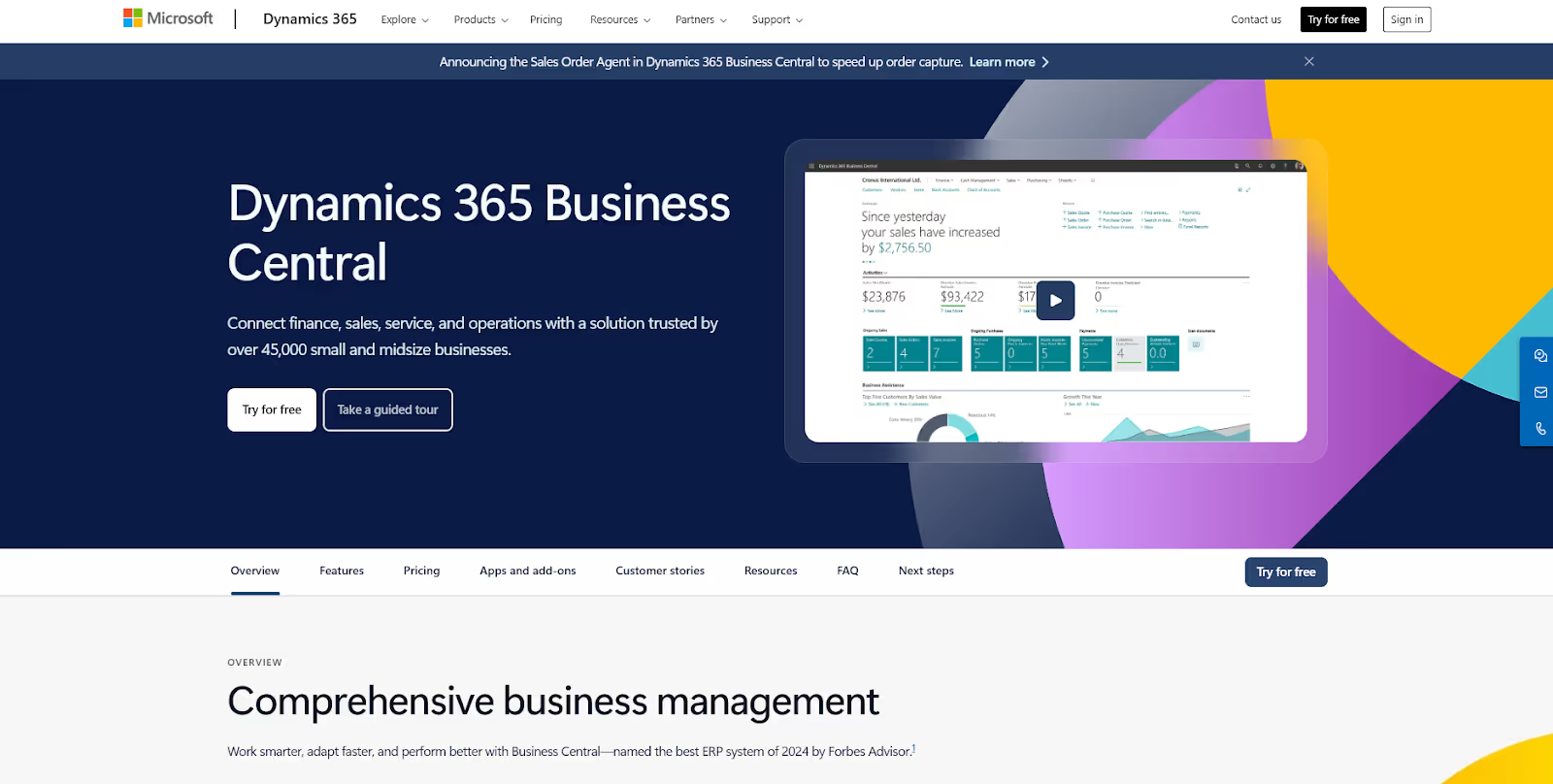
Microsoft Dynamics 365 Business Central is a robust ERP designed for small and mid-sized businesses. It fits naturally into the Microsoft ecosystem, integrating with Outlook, Excel, Teams, and Power BI.
The platform streamlines operations across finance, sales, purchasing, inventory, and customer service.
Key features
- Finance, inventory, and project management modules
- Built-in integrations with Microsoft 365 tools
- Real-time reporting through Power BI
- Flexible deployment in the cloud or on-premises
- Automated workflows across departments
Pros
- Familiar interface for Microsoft users
- Modular and scalable for growing teams
- VAT-ready templates & GCC localisation via certified partners.
- Strong automation and reporting capabilities
- Well-suited for remote and hybrid teams
Cons
- Initial setup may require a certified partner
- Interface can feel complex for new users
- Performance may slow with too much customisation
For small businesses already using Microsoft tools, Business Central offers a seamless path to advanced ERP capabilities without disrupting daily workflows.
[cta-4]
4. QuickBooks Online (Advanced Plan)
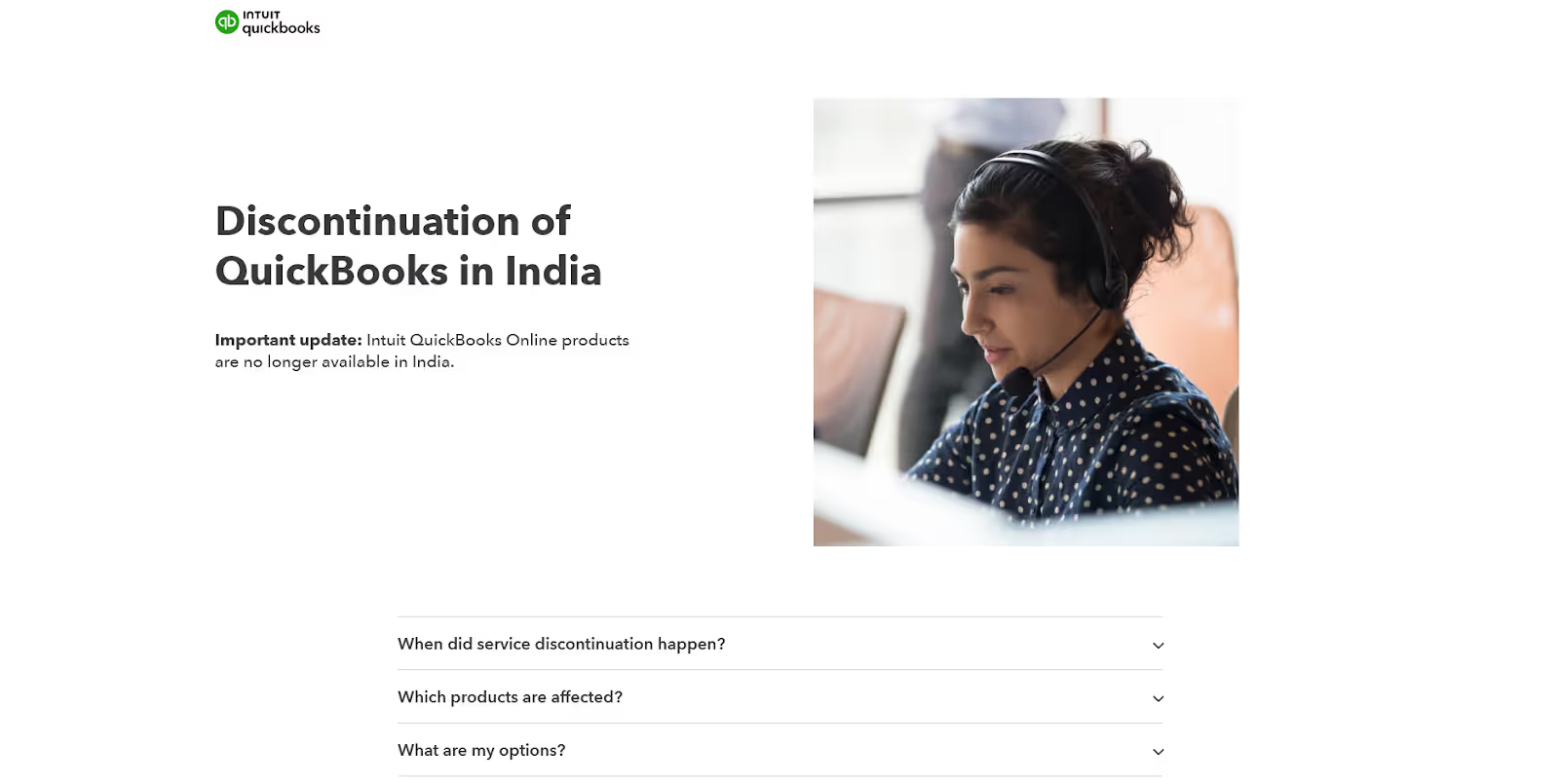
QuickBooks has evolved from basic accounting software into a robust platform offering ERP-like capabilities for small businesses.
With both Desktop and Online versions available, it supports everything from financial tracking to inventory and tax management, ideal for entrepreneurs who need control without complexity.
Key features
- Track inventory levels and cost of goods sold with low-stock alerts
- Capture and store receipts via mobile and automate tax estimations
- Monitor income, expenses, invoices, payments, and even mileage
- Manage bills, set up recurring payments, and pay vendors in bulk
Pros
- Supports budgeting at both company and project levels
- Customisable invoices and customer communications
- Automates recurring transactions and categorisation
Cons
- Fixing data entry errors or adjusting invoices can be tedious
- Budgeting tools are less intuitive and hard to scale
- Customer support quality varies significantly
QuickBooks serves over 7 million users worldwide, with significant adoption in small and micro-businesses.
5. Xero

Xero is a cloud-based accounting and ERP-lite platform tailored for small businesses looking for simplicity without sacrificing core financial controls.
It offers strong invoicing, bank reconciliation, and project tracking features, with the flexibility to integrate payroll and other tools as needed.
Key features
- Centralised general ledger for managing company-wide transactions
- Invoicing and bill payments from within the platform
- Basic project time tracking and job costing
- Organised contact management for vendors and customers
- Payroll integration via Gusto
Pros
- Solid financial reporting and ledger control
- Intuitive invoicing tools
- Affordable pricing tiers
- Mobile-friendly functionality
Cons
- User interface feels dated in parts
- No native employee time tracking
- Limited support availability
Xero is officially compliant with VAT regulations in the UAE and KSA.
6. Zoho Books
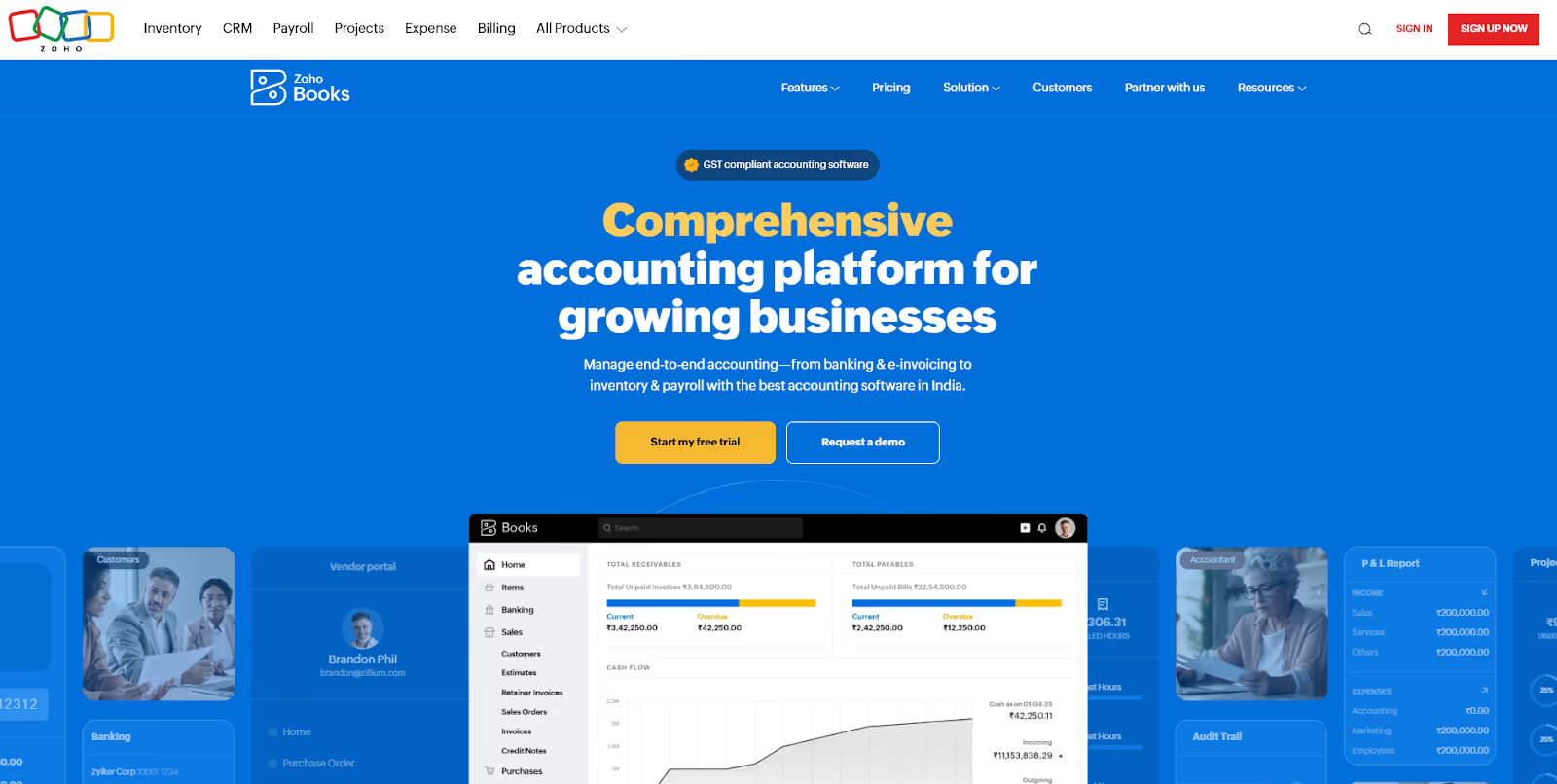
Zoho Books is a cloud-based accounting and finance platform built for small businesses and freelancers. It simplifies core financial processes like invoicing, payments, expense tracking, and sales tax, all from a user-friendly dashboard.
As part of the broader Zoho ecosystem, it integrates well with CRM, inventory, and other business apps.
Key features
- Automated invoicing, billing, and payment reminders
- Client portal for quotes, documents, and communication
- Time tracking, project management, and expense categorisation
- Integrates with Zoho CRM, Zoho Inventory, and third-party apps
Pros
- Beginner-friendly platform that supports business growth
- Simple, intuitive dashboard with easy navigation
- Affordable pricing with a plan for microbusinesses
- Clean and professional client portal improves customer experience
Cons
- Invoice limits may restrict scalability for high-volume businesses
- Limited tax tools beyond sales tax calculations
- Advanced features may require stacking multiple Zoho products
Zoho Books is now officially FTA-accredited for VAT compliance in the UAE.
7. Odoo

Odoo is an open-source ERP platform tailored for small and growing businesses. Its modular design allows you to choose only the apps you need—from finance and CRM to inventory and e-commerce, making it highly flexible and cost-effective.
Key features
- Modular apps across accounting, sales, CRM, HR, inventory, and e-commerce
- Drag-and-drop website and quote builders
- Procurement automation with supplier tracking and invoice management
- Real-time project planning and collaboration tools
- Built-in POS, email marketing, and helpdesk applications
Pros
- Extremely affordable with a free open-source version
- KSA SME-friendly with modular pricing & open-source flexibility.
- Flexible, scalable, and easily customisable
- Seamless integration between modules.
Cons
- Interface can feel clunky without customisation
- Limited customer support on the free version
- Advanced setup may require developer assistance
Odoo has over 15 million users globally, with strong traction in emerging markets like the UAE and KSA.
Why ERP Integration with Expense Management Software Matters
ERP systems are effective at managing core business functions like finance, procurement, and inventory. But when it comes to tracking and controlling day-to-day expenses, they often fall short.
Integrating your ERP with a dedicated expense management platform closes this gap, allowing finance teams to gain:
- Real-time visibility: An integrated setup gives decision-makers live access to spending across departments. This improves budget adherence, helps prevent overspending, and enables faster, data-driven decisions.
- No manual reconciliation: Without integration, finance teams are stuck reconciling card transactions, scanning receipts, and checking reports line by line. Integration eliminates this work by syncing data directly into the ERP system.
- Fewer errors, stronger data: When data moves manually between systems, it is more likely to contain gaps or duplications. Integrating expense management software with your ERP ensures accuracy by removing unnecessary touchpoints.
- Simplified VAT compliance: For businesses operating in VAT-regulated markets like the UAE and KSA, integrations help ensure that eligible transactions are correctly categorised and documented.
- Better employee experience: Most employees don't want to manage multiple systems to submit expenses. An integrated card-and-app model streamlines the process, while finance retains control through built-in rules, approvals, and limits.
- Stronger reporting and spend insights: Once integrated, businesses can analyse expenses by project, team, or department inside their ERP system. This helps identify overspending, enforce controls, and plan budgets with greater confidence.
Integrating your ERP with a dedicated expense management platform doesn’t just streamline operations, it builds accuracy, control, and visibility into every dirham your business spends.
[cta-1]
How Alaan Integrates with Leading ERP Platforms
Alaan is built to complement your ERP system, not compete with it. By focusing on expense management, Alaan ensures that day-to-day spending is controlled, categorised, and integrated into your ERP with minimal effort from finance teams.
- Corporate Cards with Built-in Controls: Alaan provides corporate cards with pre-set limits, vendor restrictions, and instant blocking features. Every card transaction is controlled at the source, reducing unauthorised or out-of-policy spending.
- Automated Spend Management and VAT Compliance: Every transaction made using Alaan corporate cards is automatically categorised, tagged with the correct VAT details, and linked to digital receipts. Finance teams gain real-time visibility and eliminate manual reconciliation work.
- Direct ERP Integration for Accurate Data: Approved expenses sync seamlessly with ERP systems like SAP, Oracle NetSuite, Microsoft Dynamics, QuickBooks, Odoo, and Zoho Books. This ensures clean, audit-ready data flows into the ERP without duplicate entries or delays.
- Better Visibility and Faster Month-End Close: With Alaan integrated into your ERP workflow, finance teams gain real-time insight into spending, cut down reconciliation time, and maintain audit-ready records effortlessly.
We believe expense data should never live in silos. By connecting Alaan to your ERP, we help you unlock cleaner records, faster closes, and more confident decision-making.
Final Thoughts
Small businesses rely on ERP systems to bring structure to their operations. But the system alone isn't enough. Finance teams still struggle with scattered transactions, delayed reports, and time-consuming admin.
That's where Alaan makes a difference.
We connect your company's everyday spending to the systems you already use, automatically, and in real time. From streamlined approvals to audit-ready records, Alaan keeps everything in sync so your team can focus on strategy, not spreadsheets.
If you're looking to close books faster, stay compliant, and gain control over company spend, we’d love to show you how.
Schedule a demo today and see Alaan in action.
FAQs
1. Why must small businesses integrate their ERP and expense management system?
An integrated setup removes reconciliation burdens, improves accuracy, and delivers real-time visibility into spending. Finance teams can then operate based on live information rather than delayed reports.
2. What are the main benefits of ERP x Expense integrations?
Key advantages include reliable data flow, faster processing, cleaning up manual workflows, and tighter compliance. Businesses using integration tools have seen processing time drop by over 60 percent.
3. What challenges do small businesses face with ERP adoption?
Common challenges include high initial setup costs, data migration errors, employee resistance to new systems, and a lack of real-time spend visibility.
4. How does ERP software help with VAT compliance in the UAE?
Modern ERP systems track sales, purchases, and expense transactions in one place, simplifying VAT calculation and reporting.
When paired with a spend management tool like Alaan, businesses can ensure every expense is VAT-compliant, with TRNs, invoices, and supporting documents automatically linked to the ERP.
5. What happens if my ERP changes or upgrades?
A well-built integration should remain stable through ERP updates, especially if delivered via certified connectors or native APIs from your expense platform.
6. How long does ERP‑expense integration setup typically take?
A basic integration can go live within days or weeks, often without custom development. Complex scenarios may take longer depending on modules, data mapping, or multi-entity configurations.


.avif)


